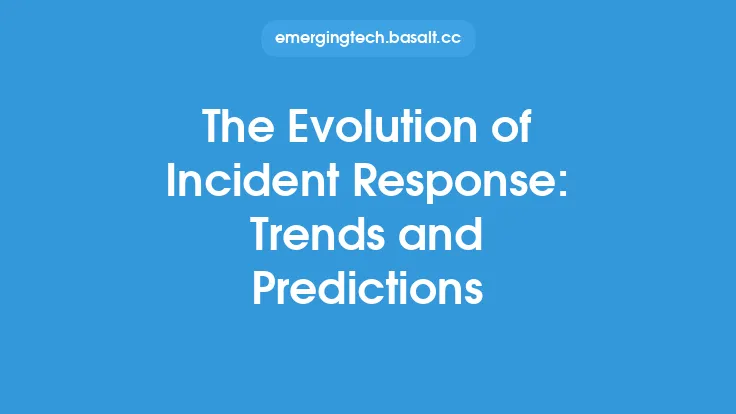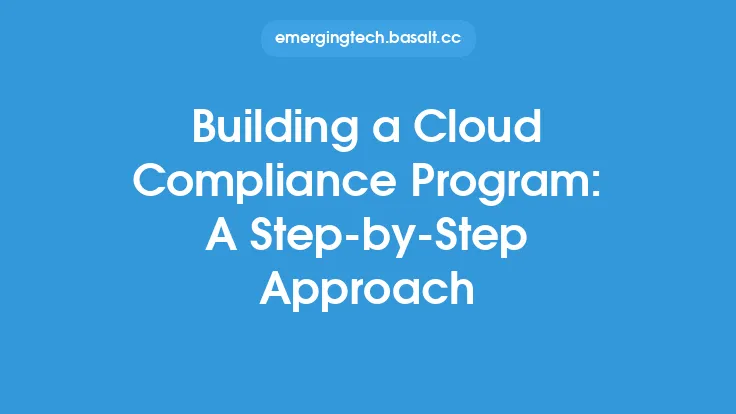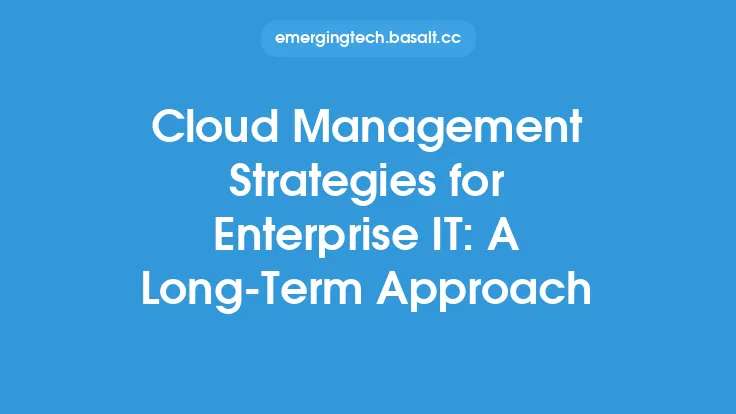As organizations increasingly move their infrastructure and applications to the cloud, the importance of cloud security monitoring and incident response cannot be overstated. Cloud security monitoring involves the continuous observation and analysis of cloud-based systems and data to detect potential security threats, while incident response refers to the processes and procedures put in place to respond to and manage security incidents when they occur. A proactive approach to cloud security monitoring and incident response is essential to protect against cyber threats, minimize downtime, and ensure compliance with regulatory requirements.
Cloud Security Monitoring
Cloud security monitoring is a critical component of a comprehensive cloud security strategy. It involves the use of various tools and techniques to monitor cloud-based systems, networks, and applications for potential security threats. This includes monitoring for unusual network activity, suspicious login attempts, and other indicators of potential security breaches. Cloud security monitoring can be performed using a variety of tools, including cloud security gateways, cloud access security brokers, and security information and event management (SIEM) systems. These tools can help organizations to identify potential security threats in real-time, allowing for swift action to be taken to prevent or mitigate the threat.
Incident Response
Incident response is a critical component of cloud security, as it provides a structured approach to responding to and managing security incidents. An incident response plan should include procedures for identifying, containing, and eradicating security threats, as well as procedures for post-incident activities such as reporting and remediation. A well-planned incident response strategy can help organizations to minimize the impact of a security breach, reduce downtime, and ensure compliance with regulatory requirements. Incident response plans should be regularly tested and updated to ensure that they remain effective and relevant.
Proactive Approach
A proactive approach to cloud security monitoring and incident response involves taking steps to prevent security incidents from occurring in the first place. This can include implementing robust security controls, such as firewalls, intrusion detection systems, and encryption, as well as providing regular security awareness training to employees. A proactive approach also involves continuously monitoring cloud-based systems and data for potential security threats, and having a well-planned incident response strategy in place in case a security incident does occur. By taking a proactive approach to cloud security monitoring and incident response, organizations can help to protect against cyber threats, minimize downtime, and ensure compliance with regulatory requirements.
Benefits of Cloud Security Monitoring and Incident Response
The benefits of cloud security monitoring and incident response are numerous. By continuously monitoring cloud-based systems and data for potential security threats, organizations can help to prevent security incidents from occurring in the first place. In the event of a security incident, a well-planned incident response strategy can help to minimize the impact of the incident, reduce downtime, and ensure compliance with regulatory requirements. Cloud security monitoring and incident response can also help organizations to improve their overall security posture, reduce the risk of data breaches, and protect against cyber threats.
Best Practices
There are several best practices that organizations can follow to implement effective cloud security monitoring and incident response. These include implementing robust security controls, such as firewalls and intrusion detection systems, and providing regular security awareness training to employees. Organizations should also continuously monitor cloud-based systems and data for potential security threats, and have a well-planned incident response strategy in place in case a security incident does occur. Additionally, organizations should regularly test and update their incident response plans to ensure that they remain effective and relevant. By following these best practices, organizations can help to protect against cyber threats, minimize downtime, and ensure compliance with regulatory requirements.
Tools and Technologies
There are a variety of tools and technologies that organizations can use to implement cloud security monitoring and incident response. These include cloud security gateways, cloud access security brokers, and security information and event management (SIEM) systems. Cloud security gateways provide a secure entry point to cloud-based systems and data, while cloud access security brokers provide an additional layer of security and control. SIEM systems provide real-time monitoring and analysis of security-related data, allowing organizations to quickly identify and respond to potential security threats. Additionally, organizations can use a variety of incident response tools, such as incident response platforms and security orchestration, automation, and response (SOAR) systems, to help manage and respond to security incidents.
Challenges and Limitations
There are several challenges and limitations that organizations may face when implementing cloud security monitoring and incident response. These include the complexity of cloud-based systems and data, the lack of visibility and control, and the need for specialized skills and expertise. Additionally, organizations may face challenges in implementing effective incident response strategies, particularly in cases where the incident is complex or widespread. To overcome these challenges, organizations should work to implement robust security controls, provide regular security awareness training to employees, and continuously monitor cloud-based systems and data for potential security threats. By taking a proactive approach to cloud security monitoring and incident response, organizations can help to protect against cyber threats, minimize downtime, and ensure compliance with regulatory requirements.
Future of Cloud Security Monitoring and Incident Response
The future of cloud security monitoring and incident response is likely to be shaped by a variety of factors, including the increasing use of cloud-based systems and data, the growing sophistication of cyber threats, and the need for more effective and efficient security controls. As cloud computing continues to evolve, organizations will need to adapt their cloud security monitoring and incident response strategies to keep pace with the latest threats and technologies. This may involve the use of artificial intelligence and machine learning to improve the detection and response to security incidents, as well as the implementation of more robust security controls, such as cloud security gateways and cloud access security brokers. By staying ahead of the curve and implementing effective cloud security monitoring and incident response strategies, organizations can help to protect against cyber threats, minimize downtime, and ensure compliance with regulatory requirements.





